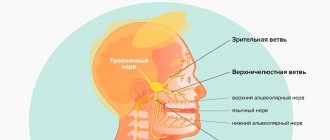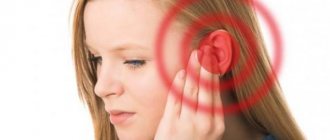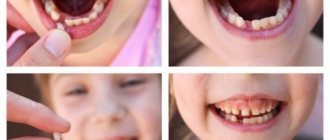Is it painful to have wisdom teeth pulled out? This question worries many people, since in most cases the eruption of these teeth occurs with difficulty and is accompanied by many problems. Often, “eights” grow incorrectly in relation to neighboring teeth or gums. In this case, healthy teeth and soft tissues are injured, and the process itself is accompanied by severe pain.
Therefore, wisdom tooth removal is a common practice in dentistry, and modern anesthetics make this procedure painless for the patient. Timely removal allows you to avoid a lot of problems in the future, so there is no need to delay your visit to the dentist.
The stages of removing the “eight” are generally similar to the procedure for removing any other tooth. However, difficulties may arise. If a tooth is located under the tissue of the gum or jawbone, if its crown is destroyed and in other cases, removal may be difficult. It is especially difficult to remove the lower “eights”, this is due to the peculiarities of the anatomical structure of the lower jaw. As a rule, they have a multi-rooted structure, and the dense lower jaw bone makes them even more difficult to extract.
The first hours after removal.
After a tooth has been removed, a hole forms in the patient's mouth, which may bleed. In order to stop the bleeding, the doctor places a gauze pad on the site of the extracted tooth for a period of 15 minutes to half an hour. After removing the tampon, a blood clot forms in the socket, which protects the bone exposed after the operation. You should not try to remove it; over time it will resolve, leaving behind healthy tissue. For the first three to four hours after surgery, be sure to refrain from eating, drinking, and smoking.
Wisdom tooth removal under general anesthesia
If the patient is allergic to standard injection anesthetics, then wisdom teeth are removed under general anesthesia. In this case, the patient’s consciousness is completely switched off, he is immersed in a surgical level of anesthesia.
Classic general anesthesia has many contraindications. Therefore, this type of anesthesia in dentistry when removing wisdom teeth is used quite rarely. Generally, sedation combined with local anesthetics is sufficient.
Both intravenous sedation and general anesthesia must be administered by an anesthesiologist. During tooth extraction, cardiac monitoring is required.
The first day after removal.
Be prepared for the fact that you may feel pain and swelling for the first time after tooth extraction. Therefore, dentists usually prescribe various anti-inflammatory and painkillers to their patients. In case of painful sensations, it is not forbidden to take medications such as
- Novigan;
- ketanov;
- analgin;
- Nurofen;
- ibuprofen, etc.
Just remember to strictly follow the instructions for taking the medications and observe the permissible dosages.
Pain relief methods
Wisdom tooth extraction is usually performed using local anesthesia. Modern drugs make it possible to achieve an adequate analgesic effect within 5-10 minutes, depending on which jaw the tooth being removed is located on.
The use of local anesthetics when removing a wisdom tooth is carried out in two ways: application or infiltration (injection). With a non-injection method of pain relief, the gum area is lubricated or irrigated with a drug. This is done in order to numb the needle insertion site for subsequent infiltration anesthesia.
The main method of pain relief during wisdom tooth removal is injection of anesthetics. The choice of the drug and the method of its administration is made by the doctor based on the specific pathology and characteristics of the patient’s body. Before using an anesthetic, an allergy test must be performed.
The most popular anesthesia for wisdom tooth removal is the painkiller articaine (its commercial name is ultracaine, ubistezin). It is able to completely block pain within a few minutes after the injection. This drug does not increase blood pressure and pulse, so it can be used during dental procedures in hypertensive patients. There are many varieties of this drug, among them there are those that are suitable for allergy sufferers and asthmatics.
To make the patient completely relaxed and get rid of unpleasant emotions, sedative anesthesia is used. Removal under sedation relieves the patient not only of discomfort during the procedure, but also of unpleasant memories of the treatment process. And the doctor can calmly perform the most complex surgical procedures.
First week after removal.
The first day after your tooth is removed, doctors advise you to refrain from rinsing. And in the following days, experts recommend not to overdo this procedure, but simply keep the medicine in your mouth for some time. Such baths should be done several times a day using various anti-inflammatory and disinfectants, including
- decoction of oak bark;
- decoction of chamomile or sage;
- miramistin;
- chlorhexidine;
- furacillin solution.
These drugs will help relieve inflammation, pain and swelling, and also have a deodorizing function. Speaking of oral hygiene, in the first days you should brush around the teeth that are located close to the affected area, and also under no circumstances use rinses or other liquids to clean the mouth.
Sedative anesthesia for wisdom tooth removal
Sedative anesthesia for wisdom tooth removal has much fewer contraindications than classic general anesthesia. Therefore, wisdom teeth removal under sedation is very popular among patients.
Sedative anesthesia for wisdom tooth removal can be either superficial or deep. With superficial sedation, the patient is in a state of semi-asleep and can follow the doctor’s instructions. Typically, nitrous oxide is used for this, which is supplied by inhalation - through a nasal mask.
For moderate and deep sedative anesthesia, drugs are administered intravenously. Moderate sedation puts the patient into a state of complete relaxation, but at the same time the patient is able to understand and follow simple commands from the attending physician. Deep sedative anesthesia during tooth extraction puts the patient into complete drug-induced sleep, but all important reflexes are preserved. At the same time, the doctor can fully concentrate on performing the manipulations without being distracted by the patient’s reactions.
Sedative anesthesia for wisdom tooth removal is indicated in the following cases:
- Dental phobia – fear of dental procedures;
- acute gag reflex;
- long-term complex wisdom tooth removal.
The use of sedatives does not have a negative effect on the human body. Therefore, this type of anesthesia today is the “gold standard” for wisdom teeth removal.
Recommendations for patients after tooth extraction surgery
Did you have to have a tooth removed? We will try to help you and remind you of the basic recommendations of doctors so that your healing process is easy and comfortable!
- Follow your doctor's recommendations carefully.
- Avoid eating for 2 hours after tooth extraction.
- During the first 24 hours, eat soft, non-irritating, warm foods.
- It is forbidden to rinse the wound during the first 24 hours after removal, to perform any manipulations to clean the hole yourself, or to apply warm compresses!
- On the first day after tooth extraction, if pain occurs, take Ketarol 1 tablet 2 times a day. If pain appears on the 3-4th day, or if your body temperature rises, consult a doctor immediately.
- Do not remove the medicine from the hole.
- You should not lift weights, play sports, go to the sauna, take a hot bath, get too cold, or drink alcohol for 4-5 days after tooth extraction.
Bleeding from the socket
After tooth extraction, the doctor usually applies a pressure bandage to the extraction site. Do not rush to take it out, even if it is unpleasant to you. This bandage should be in your mouth for 20 minutes, otherwise you risk returning to the doctor with bleeding from the hole!
And please refrain from rinsing your mouth unless your doctor prescribes it. Frequent rinsing will not stop the bleeding, but will lead to slower healing and increased pain. Usually, during the first 24 hours, the color of saliva changes due to mixing with blood. If there is severe bleeding, make a roll of sterile gauze, apply pressure to the wound with the roller and press with your mouth closed for 20 minutes. The bleeding should stop. If the bleeding does not stop, consult a doctor immediately!
Pain
After the anesthesia wears off (usually 1-2 hours after extraction), pain may appear in the area of tooth extraction. If there is severe pain, take an analgesic (Ketanov, Solpadein, Dolaren, etc.). Be sure to read the instructions for use of a particular drug, especially if there are contraindications and side effects. It is best to take the analgesic during or after meals with sufficient liquid. The choice of an analgesic, especially in the presence of concomitant pathologies (stomach ulcer, gastritis, hepatitis), is best done in consultation with your doctor or pharmacist.
Cooling
There is no need to use ice packs after simple removal. In other clinical cases, when your doctor has recommended ice, press an ice pack against your cheek on the removal side for no more than 10 minutes, with a break of 20-30 minutes. Avoid severe hypothermia of tissues. Use ice packs with caution as prolonged exposure to cold can increase pain and delay healing.
Bad habits
Smokers often have more problems after removal than those who do not smoke (for example, they are more likely to have dry sockets). The formation of a vacuum in the mouth (when you smoke or drink a cocktail through a straw) can cause the clot to dislodge. If you can abstain from smoking for two days after removal, this will undoubtedly improve the healing process.
Alcohol can dissolve the clot and irritate the wound after removal. In addition, many drugs prescribed after removal are incompatible with the use of alcohol. Therefore, refrain from drinking alcohol at least in the first days after removal.
Drugs
Be sure to inform your doctor before removal about any medications you are taking (oral contraceptives, insulin, antihypertensives, anticoagulants, etc.) so that he can choose the right anesthetic and prescribe individual postoperative care for you. The doctor may recommend you anti-inflammatory drugs (Nimesil, Mefenamic acid, etc.) after tooth extraction, especially if the extraction is difficult or there is inflammation before extraction. You should not neglect his recommendations, even if it is a course of strong antibiotics along with desensitizing drugs. If, after taking one antibiotic capsule, you feel that you do not need such strong treatment, do not stop taking the drug!!! If you suddenly stop treatment, the bacteria attacking your body may become “immune” to this group of antibiotics.
Food
If removal was difficult, your doctor may prescribe a diet of liquid or soft foods for the next 24 hours. If the removal was quite simple, you just need to make sure that you chew with teeth that are as far as possible from the extraction site. Avoid eating spicy, sour, hot and traumatic foods. After eating, oral baths are required on the first day and rinsing in subsequent days so that the hole does not become clogged with food debris. Hot liquids can dissolve a blood clot forming in the socket, so exclude them from your diet for a day after removal. Also avoid carbonated drinks and alcohol during this time, especially if you are taking antibiotics or other medications!
How to brush your teeth
During healing, it is very important to maintain good oral hygiene. On the day when the tooth was removed, it is better not to brush the teeth located in the immediate vicinity of the extraction site with a toothbrush. This does not mean that teeth do not need care at all! Moreover, good oral hygiene improves healing. Just make sure that the movements of the brush in the area near the removal are softer and more accurate. On the first day after removal, rinsing your mouth is contraindicated. Rinsing should be replaced with oral baths made from herbal decoctions or antiseptics that do not contain alcohol or other irritants.
Seams
After your tooth is removed, your doctor may stitch you up around the extraction area. Some types of thread used to make these seams subsequently dissolve by themselves; Non-absorbable sutures will have to be removed by your dentist. If you have had stitches, check with your doctor again what type of thread he used. Typically, dentists prefer non-dissolving sutures - however, the process of removing them is very simple and completely painless.
Wound healing
The wound heals after removal in 2-3 weeks. However, the healing of holes at a young age occurs somewhat faster than in the elderly. The sockets of single-rooted teeth heal faster (16-18 days) than multi-rooted ones (19-23 days). In the presence of inflammation in single-rooted teeth, delayed healing is observed for 1 week, and in multi-rooted teeth - 2 weeks later. The delay in epithelization also has a direct relationship with the traumatic nature of the tooth extraction operation. The more severe the removal, the longer the healing.
On the 3-4th day after tooth extraction, the development of granulation (soft young) tissue begins. At this time, white crusts of newly formed epithelium are observed on the surface of the socket. Tearing or scraping it off is strictly prohibited!!! By day 14, the hole is completely filled with this tissue.
Two weeks after the operation, elements of new bone tissue appear on the bottom and side walls of the socket; by the end of the first month, the socket begins to fill, and by the 45th day it is completely filled with young bone tissue.
By the end of the 3rd month, newly formed mature bone tissue fills the entire socket.
By the end of 4-6 months, and in a complicated course - by 8-10 months, it is not possible to distinguish the socket from the surrounding bone radiographically. In older people and in the presence of concomitant diseases, wound healing occurs more slowly.










